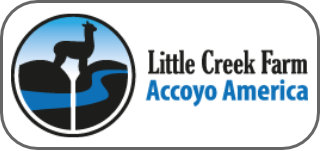The effect of maintenance v, submaintenance diets of pregnant ewes in 1991 and 1992 on establishment of the wool follicle population in their progeny, and its effect on the progeny's wool production (quantity, quality and variation across the body of the animal) to 1.4 years of age was examined. The experimental protocol used cloned animals created by bisecting embryos at day 6 of pregnancy. Each clone was placed in a ewe, which was subsequently fed from about day 50 to 140 of pregnancy at maintenance or submaintenance. Ewes on maintenance nutrition maintained liveweight throughout pregnancy, while submaintenance ewes were 12.1 kg lighter (P < 0.001) 10 days before lambing. In 1991, a total of 74 lambs were born, including 17 sets of surviving clones. In 1992, 102 lambs were born, including 18 sets of surviving clones. Only data for the 35 sets of genetically identical 'twin' progeny and their dams are reported. Birth weights of lambs born to ewes fed at the submaintenance rate were 0.5 kg lighter (P < 0.01) than their 'twins' born to ewes fed at maintenance. Midside secondary:primary (Sf: Pf) ratios for mature wool follicles were less (P < 0.01) at birth, lamb and hogget shearing (1.4, 1.5 and 2.1 units respectively) for the progeny born to ewes fed at submaintenance. Progeny from ewes on the submaintenance treatment produced less clean wool, 0.1 kg to 0.4 years of age (P < 0.01) and 0.14 kg between 0.4 and 1.4 years of age (P = 0.10), than their maintenance counterparts. Hogget wool was 0.1 pm broader (P < 0.05), with a 0.5% units lower coefficient of variation of fibre diameter (P < 0.01), and a position of break closer to the staple tip (P < 0.001) for progeny of submaintenance ewes than their maintenance counterparts. There were no significant differences in yield, staple length, staple strength and percentage of fibres greater than 30 pm in diameter. Differences in mean fibre diameter arose between 1 and 1.4 years of age, coinciding with the period that the animals were grazing high quality pasture. Effects of maternal undernutrition on mean fibre diameter and Sf: Pf follicle ratios of progeny were most pronounced on the hind leg (P < 0.01), and not significant on the front leg. However, variations in other wool quality traits across the body of the hoggets, expressed as a percentage of the midside value, were not significantly affected by maternal undernutrition. Clearly when evaluating management strategies for the pregnant ewe, the effect on lifetime production and quality of wool of their progeny needs to be considered. Merino hoggets that produce an extra 0.14 kg clean wool that is 0.1 pm finer will compensate for some extra management and feeding of their dams during pregnancy to prevent weight loss. If these effects continue throughout the life of the animal, then it will increase the cost effectiveness of feeding to maintain maternal weight over pregnancy.
more »